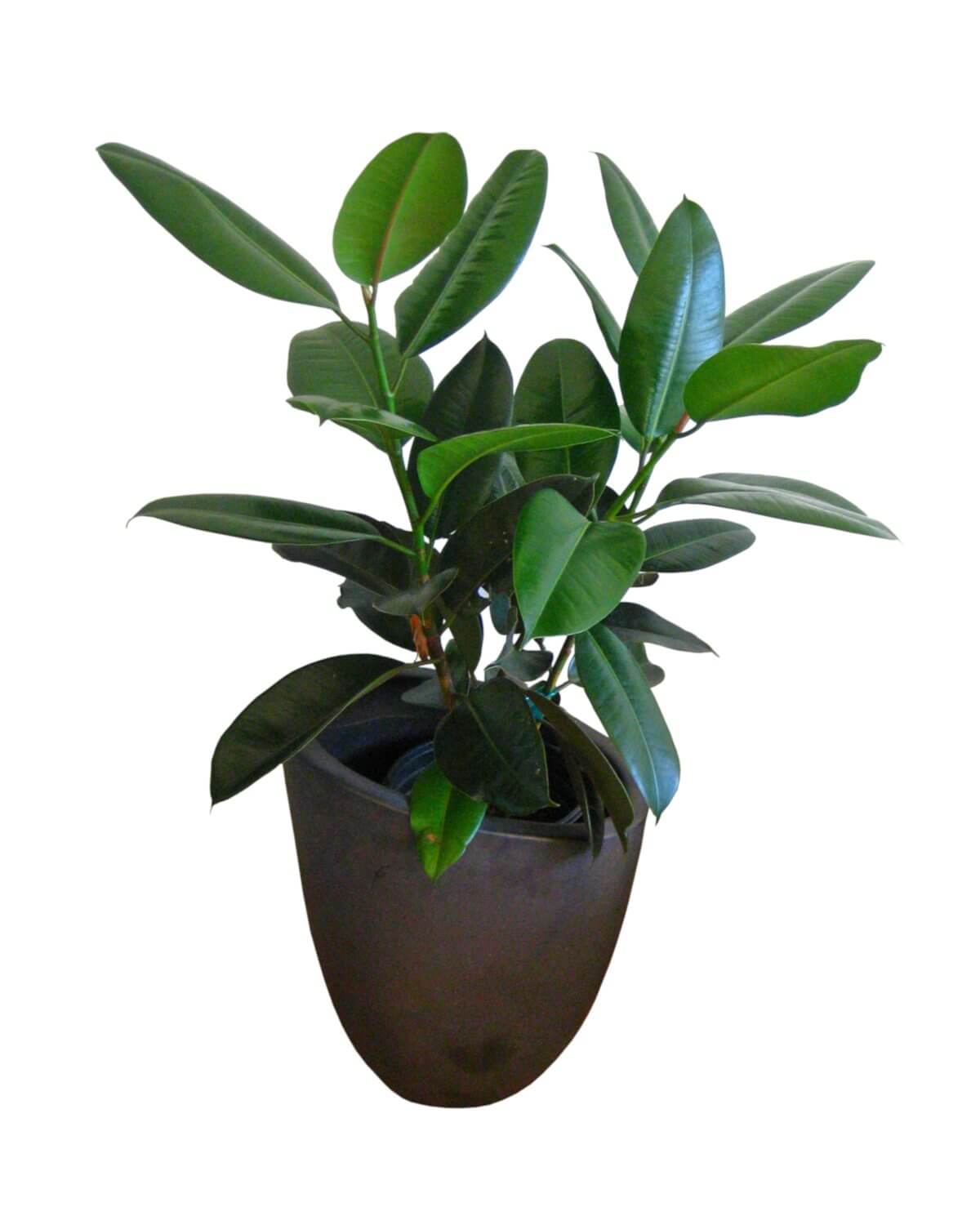It is not easy for cat owners with a green thumb: A large number of the most popular houseplants are poisonous for curious house tigers. This is also the case with the rubber tree (Ficus elastica) from the fig genus. In the leaves of the tree, there is a milky sap that contains dangerous substances. Here you can find out why you should keep cats and rubber trees separate from each other.
Rubber Tree and Cats
- The rubber tree belongs to the ficus family. Ficus is slightly toxic to cats and other pets.
- The leaves of the plant contain a milky sap that contains harmful chlorogenic acid. It also contains rubber, coumarin, and wax.
- If the cat has eaten a rubber tree, it may cause gastrointestinal upset with symptoms such as vomiting and diarrhea.
Why is the Rubber Tree Harmful to Cats?

The Ficus elastica contains a milky sap that is slightly toxic to cats. This is mainly due to the substance chlorogenic acid it contains. The acid irritates the mucous membranes and can lead to mild poisoning. Mere contact with the rubber tree poses no danger to the cat. However, if the leaves are damaged, for example by scratching or nibbling on the leaves, the toxic milky sap can get into the cat’s organism. Since cats are naturally curious and like to play with houseplants, avoid letting your cat have access to the rubber tree.
Symptoms of Poisoning From the Rubber Tree
Symptoms of poisoning may occur if your cat has nibbled or even eaten parts of the Ficus elastica. The symptoms usually appear a short time after consuming the poisonous plant. Depending on how much of the toxic substances have got into the cat’s organism, the symptoms are stronger or weaker. The following signs indicate poisoning by the rubber tree:
- Vomiting of foam, mucus, or parts of plants;
- Diarrhea, with severe poisoning also bloodred diarrhea;
- Irritation of the mucous membranes, especially the mucous membranes of the mouth;
- Feeling unwell, withdrawn, or apathetic;
- Rare: convulsions or paralysis.
Cat Has Eaten Rubber Tree – What to Do?
Even in small quantities, the slightly poisonous rubber tree can cause slight discomfort to more severe symptoms such as vomiting or diarrhea.
Fortunately, the bitter taste of the plant is a deterrent for most cats, so they won’t nibble on it more than once or twice.
If your cat has nevertheless eaten rubber tree, observe whether your velvet paw shows unusual behavior or the symptoms of poisoning mentioned. If so, take your cat to the vet. In any case, you should put the rubber tree in a place that the cat cannot access. This is the only way to prevent the cat from repeatedly nibbling on the plant and possibly causing serious damage.

